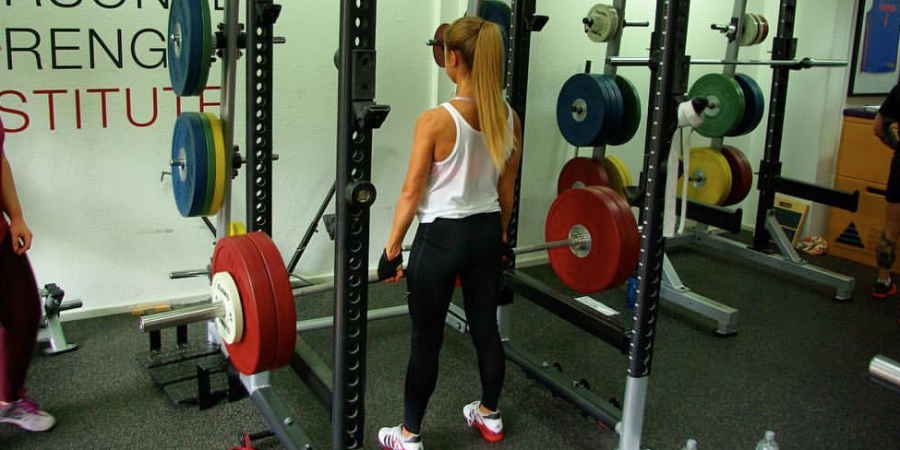The hip thrust is a relatively popular exercise these days, in which you lie down with your upper back leaning against the long side of a bench with your knees bent (feet under your knees) and your hips against a resistance (barbell + pads resting on your hips). ) stretched out. There are now even custom-made devices including a platform on which you can perform the hip thrust.
I am regularly asked for my opinion on hip thrusts. My answer is simple: “The hip thrust is not a bad exercise. However, there are a number of exercises that do a better job than the hip thrust.”
In detail, there are far better alternatives to train the hip extensors, such as variants of squats and deadlifts. Especially for athletes for whom sporting performance counts.
We are not fans of hip thrust at YPSI for the following reasons, among others:
1. The hip thrust trains a sub-optimal recruiting spirit . In real life, you're not going to do a hip extension without a knee extension. The hip and knee joints are stretched synchronously when jumping or starting a sprint. Conditioning the nervous system to extend the hips separately and keep the knees flexed (final position is 90° in the knee joint in the hip thrust) prevents the natural synchronization of both joints and thus the training of a meaningful recruitment pattern. Exercises like squats or deadlifts offer a far more natural and meaningful recruitment pattern.
2. Decreased glute activation during hip thrust due to lack of rectus femoris flexibility. A lack of flexibility in the rectus femoris reduces activation of the gluteus maximus, which is the primary target muscle in the hip thrust and is often the reason proponents of the exercise do it. However, hip extension with a flexed knee causes a stretch in the rectus femoris, which in the absence of flexibility, which statistically occurs in over 90% of exercisers, reduces final hip extension and thus gluteal recruitment. This also often leads to hyperextension of the lumbar spine, which should also be avoided.
3. The hip thrust does not present a sport-specific neurological pattern. No sport requires you to stretch your hips while lying on your back on a bench. However, in most sports, power must be transmitted into the ground with one or two legs while in an upright position (jumping, running, throwing). A neurological pattern trained in the squat, deadlift, or Olympic lift.
Occasionally, a hip thrust to activate the glutes is also recommended as part of the warm-up. He can do this job. However, in YPSI we prefer other techniques that accomplish this task faster and more efficiently, such as optimizing the rectus femoris and IT bands with the YPSI tool or releasing the psoas major via acupressure.
Conclusion: Exercises with natural movement patterns that have been around for decades or even centuries - like squats and deadlifts - are proven to work. Focus on getting better at variations of these exercises, especially if your goal is quick and lasting gains in the gym.
Picture: Marijana H. does rack deadlifts during one of the workouts of the Before'n'After Bootcamp seminar, which primarily trains the final extension of the hip and thus recruits a high number of fibers in the gluteal muscles.

